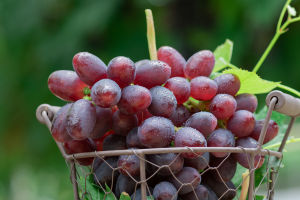Coffee: Brew To Perfection
Coffee is more than just a beverage—it’s a ritual, a moment of comfort, and a delightful way to start the day.
But with so many brewing methods, coffee beans, and preparation techniques, it can be challenging to find the perfect cup.
Whether you’re new to coffee or looking to enhance your brewing skills, understanding the essentials of coffee beans, brewing methods, and flavor profiles will help you make the most of each cup.
This guide covers everything from selecting quality beans to experimenting with different brewing methods. By the end, you’ll be equipped to make coffee that’s precisely tailored to your tastes.
1. Understanding Coffee Beans and Roasts
The foundation of a great coffee lies in the beans and how they’re roasted:
Types of Coffee Beans: Coffee is generally categorized into two main types: Arabica and Robusta. Arabica beans have a smooth, mild flavor, often with fruity or floral notes, while Robusta beans are stronger, more bitter, and higher in caffeine. Arabica is typically preferred for its complex flavor profile, though blending the two can create unique flavors.
Roast Levels: Roasting transforms green coffee beans into the aromatic, flavorful beans we know. Light roasts retain more acidity and showcase the beans’ natural flavors, often with a fruity taste. Medium roasts balance acidity with a deeper body, while dark roasts have a bold, rich flavor with low acidity, often featuring chocolate or caramel notes.
Freshness Matters: Freshly roasted beans make a noticeable difference. Coffee loses its flavor within two weeks of roasting, so aim to buy fresh beans in small quantities and store them in an airtight container, away from light and moisture.
2. Exploring Different Brewing Methods
Each brewing method brings out unique flavors, making it essential to find one that suits your taste:
Drip Coffee Maker: The classic drip coffee maker is easy and efficient, perfect for a consistent brew. Drip coffee typically has a balanced flavor, though it may lack some of the complexity of other methods. Use medium-coarse grounds for best results.
French Press: Known for its full-bodied flavor, the French press method allows coffee grounds to steep directly in hot water. This produces a rich, bold flavor with natural oils and fine particles, resulting in a heavier texture. Use coarse grounds and steep for 4 minutes before pressing.
Pour-Over: Pour-over methods like Chemex allow for precise control over water flow and extraction time, yielding a clean, nuanced flavor. Use medium-fine grounds, and pour water slowly in circular motions to extract the best flavor.
Espresso: Espresso machines use high pressure to brew concentrated coffee, which forms the base for drinks like lattes and cappuccinos. Espresso has an intense flavor with a creamy texture. For espresso, use fine grounds and aim for a shot pulled within 30 seconds.
3. Fine-Tuning Your Coffee’s Flavor
Achieving the ideal coffee flavor involves adjusting certain variables:
Coffee-to-Water Ratio: A general rule for most methods is a 1:2 coffee-to-water ratio, though you can adjust based on preference. More coffee leads to a stronger flavor, while less results in a milder cup.
Water Temperature and Quality: The water temperature should be between 190°F and 195°F. Using filtered water without added minerals helps maintain coffee’s pure flavor, as hard water can alter taste and lead to buildup in machines.
Grind Size: Grind size affects how quickly coffee extracts, with finer grinds extracting faster and producing a more intense flavor. Match grind size to your brewing method: fine for espresso, medium-coarse for drip, and coarse for French press.
Experiment with Additions: Milk, cream, sweeteners, and spices like cinnamon or nutmeg can be added for variety. If you prefer black coffee, try different roasts to find the flavors that stand out best on their own.
Video by Joshua Weissman
Brewing great coffee is both an art and a science, and it starts with quality beans, a suitable brewing method, and attention to details like grind size and water temperature. By understanding the basics of coffee and experimenting with these variables, you can create a personalized cup that highlights the flavors and textures you love most. Whether you enjoy a rich espresso, a smooth pour-over, or a full-bodied French press, this guide provides the tools you need to craft a perfect cup of coffee every time.


